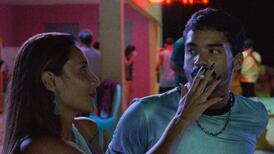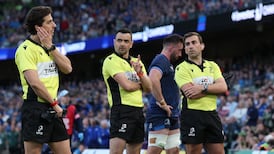There are many Brooklyns in the Brooklyn of Colm Tóibín’s 2009 novel; a sequel to which, Long Island, will be published next year. There is the book itself, and the fictional Brooklyn of the 1950s where it is partly set. There is the 2015 film of the same name, directed by John Crowley and starring Saoirse Ronan, for which she received her second Oscar acting nomination.
And then there is the story told in Brooklyn, of two sisters and a widowed mother, who live in Enniscorthy, Co Wexford. One sister, Eilis, emigrates to the New York borough, falls in love and makes a new life there. Rose, the other sister, remains living at home with her mother and dies prematurely. Eilis returns to Ireland for a visit, and has life-changing decisions to make during that time.
“Rose went to America and Eilis stayed at home. They lived on this street. They swapped the names of the sisters for the film.” I am sitting listening to an older resident of Enniscorthy, Co Wexford, who is convinced that the characters in Tóibín’s novel were real people. It’s not true. While Tóibín, who grew up in Enniscorthy, has said in the past that as a child he recalls a neighbour coming to his family home and talking about a daughter who had emigrated to Brooklyn, this memory was simply a generic starting point for his novel.
In some ways, it is understandable that there is a degree of blurring of reality and fiction around the novel and movie of Brooklyn; the characters it depicts, the town of Enniscorthy, and the people who live there today. For instance, while the Irish scenes in the novel are set in Enniscorthy, it is extremely rare that the movie of a novel will be filmed in the actual streets and buildings depicted in the original story, as happened with Brooklyn.
“The amazing thing is that the places in the book are places that were used in the film,” Cathy Keane says. Keane, of Heritage Tours Wexford, runs a number of local tours, including the Brooklyn Movie Bus Tour. “Friary Street, Church Street, Castle Street, Market Square, the Athenaeum.” Keane is going through the book of photographs, The Making of Brooklyn in Enniscorthy, that she published of ad hoc pictures she took of the stars, extras and locals during filming. “Colm Tóibín’s father used to work in the Athenaeum, running dances. They used it for the dance scenes at the beginning, and for Nancy’s wedding reception scenes.”
[ Moby Dick in Youghal: ‘It was magic. It was just like Hollywood came to town’Opens in new window ]
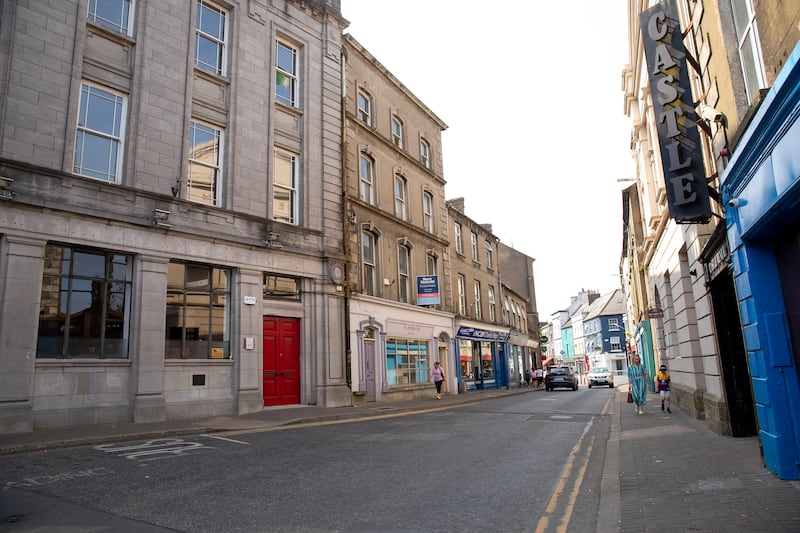
The Athenaeum, a distinctive building on Castle Street dating from 1892, deserves a documentary of its own. Its Greek name references both Athena, the Greek goddess of wisdom and war, and a temple in Athens where people gathered to debate and discuss learning. Constructed over two floors, it was built to function as a social club, theatre and dancehall, and was used and beloved by locals for decades. However, by the time the film crew arrived in 2014 to shoot the movie, it had been closed since the 1990s. They got access for filming, but it remains closed to the public at present.
Liam Doyle, who provided props and was also one of 35 people involved in set dressing, has keys to the Athenaeum, and is showing me around. The building has a lot of screen time and much of what people see of its lovely interiors, with high ceilings, long windows and a stage, was authentic, although since filming, the upper floor has gone through much structural change. “They only painted the walls up the dado, a few feet off the ground,” he explains. “The walls were actually downright grimy in real life, but in the film, they look so atmospheric.”
[ Saoirse Ronan: ‘I can go anywhere. I have a lovely place to come back to’Opens in new window ]
He saw the interiors when it was being prepared for filming, with period lights being installed, and the band being set up, and tables decked out with flowers and china for the wedding reception scenes. “They tried as much as possible to keep people out of it, as they didn’t want photos leaking to the press,” he says. “So if you went in, you had to leave your phone behind.”
In the book, Rose Lacey works as an accountant at Davis’s Mill; a real mill, which is on Cathy’s tour, and is now derelict, having closed almost 20 years ago. The mill’s office, where Eilis later does some accounting work, was filmed in a room downstairs in the Athenaeum, with frosted glass, which Doyle shows me. He only discovered those scenes had been shot when the crew were taking down the set, including bundles and bundles of papers. “As it happens, I had original documents from Davis’s Mill from when it closed. I could have loaned them,” he says, shaking his head at this missed opportunity for singular synchronicity.
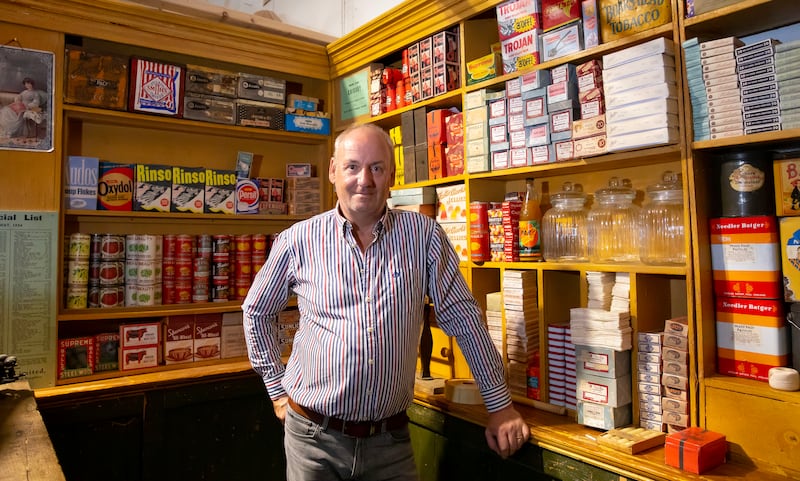
Doyle has a props business, and supplies movies and commercials. “Props” is a word that covers pretty much everything that has even been used in any movie, ever, so those such as Doyle who rent out props usually have a very specific niche area. “My specialities are 1950s groceries,” he says.
In the movie, Eilis works in Mrs Kelly’s grocery shop. On Castle Street, it’s now a NCBI (National Council for the Blind of Ireland) charity shop. After filming, the shop was left intact for a day so locals could come in and take pictures. The interior units, minus the props, remained there for three years. The Athenaeum is opposite both the NCBI shop, and the former National Bank, which doubled as a post office, is also on the same street, so this was a key hub for the duration of the shoot.
Once the carpenters had created the shop set, Doyle brought his 1950s tins and boxes and bottles along, and the production team selected what they wanted. “You need originals to create multiples for the labels and boxes,” he explains. “I have about 5,000 props but a lot of those are multiples – boxes of cigarettes, etc.” For authenticity, cardboard boxes were filled to keep their shape on the shelf. His copies of period foodstuff labels for tins were wrapped around the cheapest tins he could find. “Behind those labels are tins of spaghetti hoops.”
Doyle sources originals for his props at car boot sales and online. Who knew there was a thriving market in 1950s groceries and packaging? “I was on eBay last night wondering if I’d buy a box of 1950s cornflakes for £230 sterling. It had the original cornflakes in it and all. It seemed a lot of money, so I hesitated.” By morning, when he went to have another look, the box had been sold.
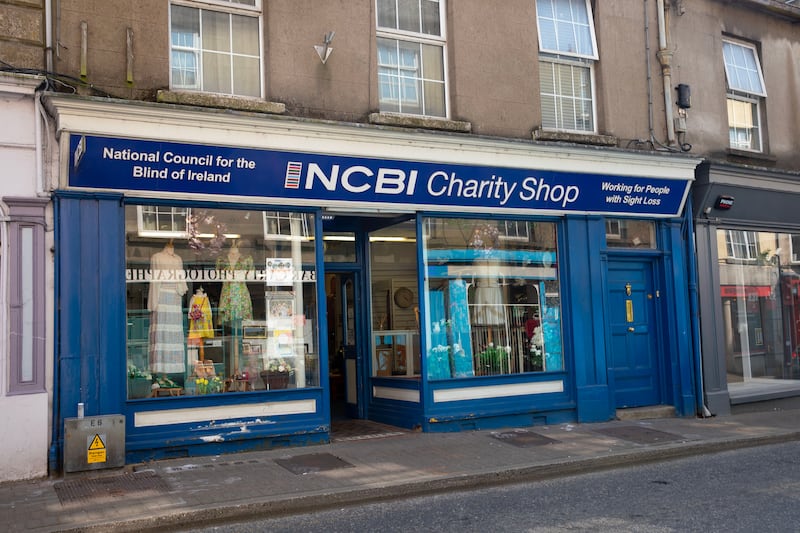
Emmet Lawlor, who works in Enniscorthy Castle as a guide, was 24 when the movie was made. He was cast as one of the six rugby club extras who were Jim Farrell’s buddies, played by Domhnall Gleeson. “I saw the casting call, and they were looking for different age groups and different requirements. Mine was for sporty men between 18 and 25.”
The casting team took pictures and asked questions: had they read Brooklyn? (Lawlor had; “that seemed important to them”), were they interested in film? and did they have any stories from their grandparents about life in 1950s Enniscorthy? Lawlor lifts up his hands and forearms, which are tattooed. “I got them since. I don’t think they’d have cast me if I had them then.”
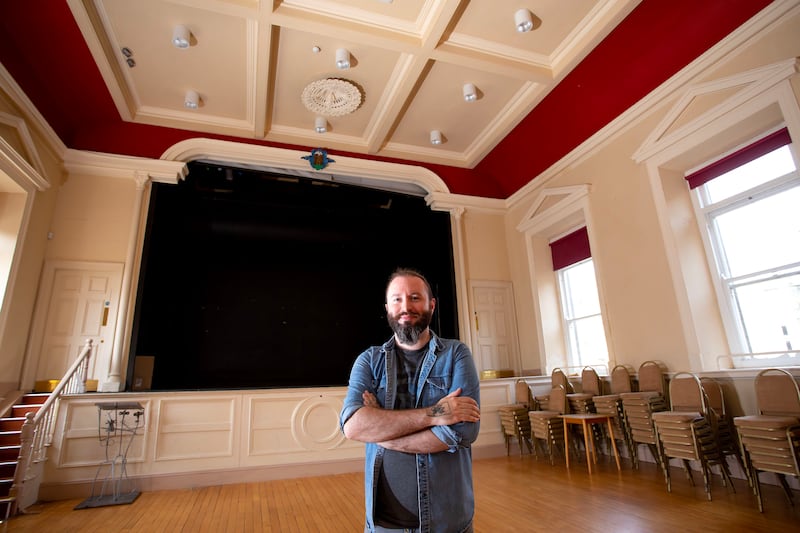
Brooklyn had three weeks of filming in Ireland, most of that on location in Enniscorthy and Curracloe Beach. There were four weeks in Canada and just two days in Brooklyn itself. Before filming, there was all the set-up to be done in advance. While the shoot was in Enniscorthy, caterers set up buffet-style meals at the dog track, and everyone then took their trays to eat at one of the double-decker buses brought in for the duration, which were fitted out with tables and seats. “The food was great,” he says. “There was no limit put on it. You could get dessert and all.”
Before shooting, training was provided for some of those extras, including Lawlor. “We had to learn how to waltz. It’s come in handy a few times since,” he says, laughing. They were in key scenes, some of which involved dancing in the background at Nancy’s wedding. “Any scene we were in where there was dancing, there were marks on the ground, and we had to keep within those marks.”
They had two dancing classes before shooting began, after which time they had to show up at 8.30am each morning, clean shaven. Even extras that don’t have any lines – which none of his group of six did – went through a tremendous amount of process.
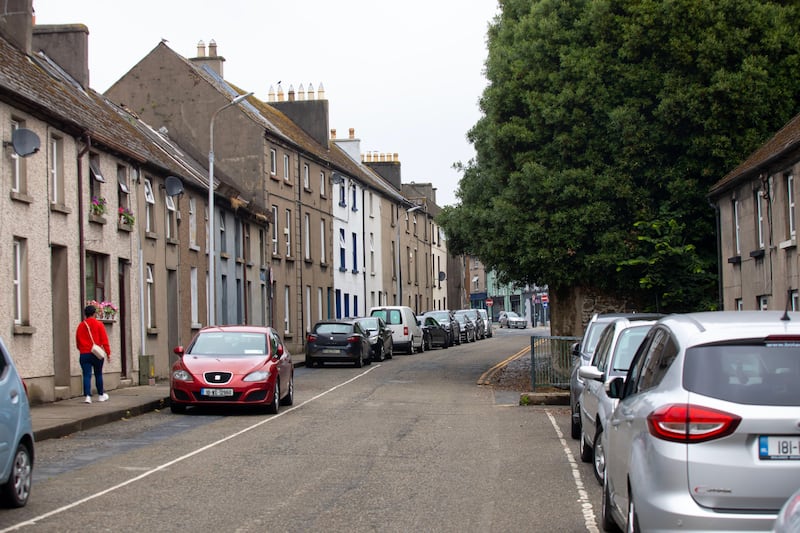
There were, for instance, three different outfits for the three different scenes: rugby blazers for the initial dance scenes, three-piece suits for the wedding and a different suit for the funeral scenes. Their hair was styled, 50s style. Lawlor shows me a black and white photograph of himself in a three-piece period suit. “I look like my grandfather,” he says.
We are playing his scenes from the movie stop-start on my laptop. In some scenes, such as the wedding, you can barely glimpse him, although he assures me his mother had no trouble picking him out from the crowd. It’s a reminder of how much work goes into making everything look as authentic as possible, even though some of it is so fleetingly glimpsed. Extras were paid, Lawlor recalls, €215 a day.
Colm Tóibín also makes an appearance as an extra: as the man in a flat cap standing behind Ronan as she queues to go through emigration in the US. I had watched the movie through before reading of his participation and had to go back and freeze-frame the scene to spot him the second time.

The first Breda Kennedy heard that her three-storey house might have a starring role in the movie was when she was coming home and found a contingent of people clustered around her front door on Court Street, which abuts John Street.
“One man said to me he was a location manger and they were looking for a house to be where the Laceys lived,” she says, sitting in her neat front room, which is a striking period time capsule in itself. “He said they had been looking at other places but the length of the street was in favour.”
From Kennedy’s house, you can look down the curve of John Street, and even in 2023 without the intervention of any film production, the vista does look uncannily of another era. Whatever has happened at the back of these houses during the last century or so, their facades have an unbroken symmetry and unity that is rare to see these days in Ireland’s vernacular architecture.
They took out my Holy Water font from the hall and put in one so big you could have christened a child in it
Kennedy’s PVC window and front door were replaced by a sash window and period door. It’s through this door that Eilis comes and goes in Enniscorthy, although the interior shots of the house itself were filmed at a set in Ardmore Studios in Co Wicklow. The hall was adapted too. During the five or so days her house was being used, she went to stay elsewhere, but came back every evening when her own door was put back.
“They took out my Holy Water font from the hall and put in one so big you could have christened a child in it,” she says indignantly. “I don’t know what was wrong with my own one. It was a wedding present from 1963, in the days when people gave wedding presents like that.”
She met Saoirse Ronan in her home while she was filming there and other members of the cast at other times. “Saoirse was lovely. She had a cup of tea in my kitchen.” They signed a copy of Brooklyn for her. “My son John borrowed it from me and I haven’t got it back yet,” she recounts, hoping this nudge in a national newspaper will remind him to return it.
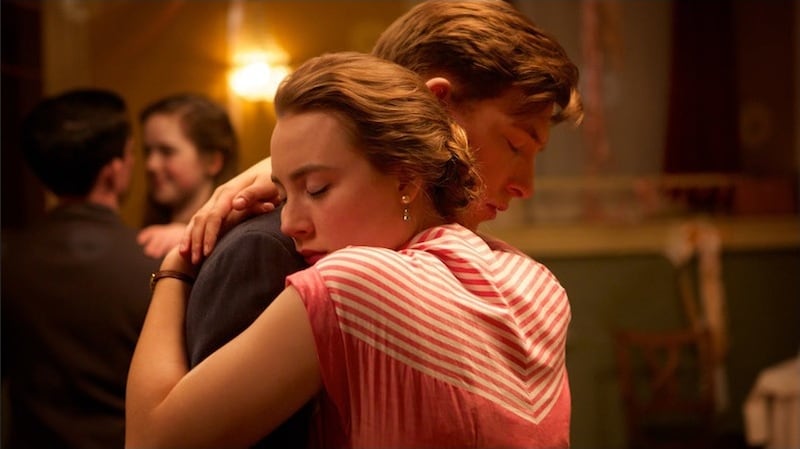
Brooklyn rated: A cleverly structured film that triggered heaving sobs without giving into sentimentality
Chief film correspondent Donald Clarke gives his assessment of Brooklyn
★★★☆☆
The Irish film industry enjoyed an annus mirabilis in 2016. Setting a national record (one broken earlier this year), domestic talent and films notched up nine Oscar nominations. The Irish Film Board scored more mentions than veterans Paramount and Universal combined. Brooklyn, up for three, did not end up winning an Academy Award, but the film’s awards profile – alongside that of Lenny Abrahamson’s Room – offered confirmation that the nation had planted its flag on Planet Cinema.
It also reassured supporters of Saoirse Ronan, who had worked steadily since her nomination for Atonement in 2007 without securing many substantial hits, that the young actor really was here for the duration. Two further nominations followed.
The acclaim came for a cleverly structured film that triggered heaving sobs without giving into sentimentality. It deserves acclaim alone for convincing modern audiences – no offence intended to the good people of Wexford – that choosing between 1950s Enniscorthy and 1950s New York City could pose a genuine dilemma for a contemporaneous young person. Then again, Colm Tóibín, in his source novel, stayed away from the jazz clubs of 52nd Street and the literary salons of the Upper East Side.
On the page, Eilis Lacey finds Manhattan a faintly frightening place. Nor are we anywhere near the hip Brooklyn of today – no organic cheesemongers, no techno-folk revivalists. John Crowley’s film, similarly resistant to glamorous bustle, sets the crossroads at a junction between two different classes of comfort. Romantic cinema loves to set up such choices. Bette Davis was forever faced with the necessity of dumping one ideal for another. And audiences still argue about the way Eilis jumped when setting rugby club balls with Domhnall Gleeson against Long Island security with Emory Cohen.
The imminent sequel from Tóibín will surely only further agitate those disputes.
Where can I watch it?
Available to rent or buy from Google Play, Apple TV, Sky Store and Microsoft. Streams for subscribers to Mubi and Lionsgate+.









